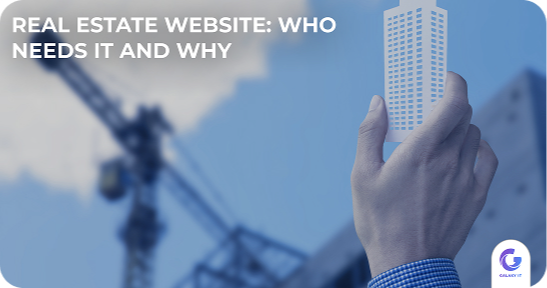Why certified as a medical software specialist so importent?
- 03.05.2024
- 10 views
- 3 min
The necessity of specialized medical software
In today's rapidly evolving technological landscape, the medical sector stands at the forefront of innovation. The demand for swift and precise solutions in healthcare has propelled the necessity of specialized medical software. However, proficiency in navigating this software requires more than just expertise—it necessitates recognized qualifications and certification.
As technology continues to revolutionize healthcare, the bar is continually raised for software professionals. This underscores the importance of obtaining the Certified Professional for Medical Software (CPMS) certification for those seeking to excel in this dynamic field.
What is CPMS Certification?
The CPMS (Certified Professional for Medical Software) certification is a recognized standard in the medical field, confirming competence in working with medical software. This certification verifies that a professional possesses the necessary knowledge and skills for the development, implementation, and support of software products used in medical practice. It fosters trust among both medical professionals and clients who rely on these products to ensure quality healthcare.
 CPMS certification requires candidates to demonstrate deep knowledge in both software engineering and medical practice, as well as the ability to apply this knowledge practically to solve real-world problems. It can be a key factor in securing employment at leading medical companies or consulting with medical institutions on the selection, implementation, and optimization of software solutions.
CPMS certification requires candidates to demonstrate deep knowledge in both software engineering and medical practice, as well as the ability to apply this knowledge practically to solve real-world problems. It can be a key factor in securing employment at leading medical companies or consulting with medical institutions on the selection, implementation, and optimization of software solutions.
A crucial component of obtaining CPMS certification is successfully passing the corresponding exam. This exam evaluates candidates' knowledge and skills in medical software, covering topics such as medical standards and regulatory requirements, technical aspects of programming, data security and confidentiality, as well as implementation and support practices. Preparation for this exam requires dedication and discipline, but success opens doors to numerous opportunities in the medical field while ensuring confidence in one's knowledge and abilities.
Classification as a “medical device”
Medical software often falls under the classification of a medical device, subjecting it to stringent regulatory requirements. In other words, to obtain a CPMS certificate for a medical device, it is important to follow the points that:
- Medical Purpose: The software is intended for the diagnosis, monitoring, treatment, alleviation, or compensation of disease.
- Risk Classification: Based on the level of risk associated with its use, the software may be classified as a Class I, II, or III medical device.
- Software Functionality: The intensity of the software's interaction with patients or other medical devices determines its classification.
- Data Handling: Compliance with requirements regarding data confidentiality and security, particularly when processing sensitive patient information.
- Quality Management Systems: Manufacturers must implement quality management systems to ensure the safety and effectiveness of the software throughout its lifecycle.
Understanding these classifications is crucial for ensuring the safety and effectiveness of medical devices and software. Let's explore each level and its implications for regulatory compliance and patient safety.
Classification for Applications and Medical Software

Medical devices are categorized into three classes based on the level of risk associated with their use:
- Class I Devices: These devices pose the lowest risk to patients and users. They are typically simpler in design and function, such as tongue depressors, bandages, or handheld surgical instruments. Software classified as Class I devices usually performs basic functions and does not directly impact patient health or safety.
- Class II Devices: Devices in this class pose a moderate risk to patients and users. They may include products like infusion pumps, X-ray machines, or powered wheelchairs. Class II software often provides more advanced functions and may have a greater impact on patient health, requiring stricter regulatory oversight.
- Class III Devices: These devices present the highest risk to patients and users and are subject to the most stringent regulatory controls. Examples include implantable pacemakers, heart valves, or neurostimulation devices. Class III software typically involves complex algorithms or interfaces directly with the patient's body, necessitating rigorous testing and clinical validation.
Understanding the classification of medical devices is essential for developers, manufacturers, and regulators to ensure that software meets the necessary standards for safety, effectiveness, and regulatory compliance.
Ensuring Compliance and Safety
In conclusion, navigating the regulatory landscape of medical software classification is essential for developers, manufacturers, and regulators alike. To ensure the safety, efficacy, and compliance of medical software, stakeholders must:
Understand the nuances of device classification:
This entails grasping the intricate criteria that determine the classification of medical devices into different risk categories. It involves recognizing the distinctions between Class I, Class II, and Class III devices and their corresponding regulatory requirements. Understanding device classification nuances enables stakeholders to navigate regulatory pathways more effectively, ensuring that their products meet the necessary standards for safety and effectiveness.
Adhere to regulatory requirements:
Compliance with regulatory requirements involves meeting the standards set forth by regulatory agencies such as the FDA or CE Marking.
This includes fulfilling documentation, testing, and quality management system requirements outlined by regulatory authorities.
Adhering to regulatory requirements is crucial for obtaining market approval and ensuring that medical software meets the necessary standards for safety and performance.
Commit to rigorous testing and validation procedures:
Rigorous testing and validation procedures involve conducting comprehensive assessments of medical software to evaluate its safety, efficacy, and performance. This includes conducting clinical trials, usability studies, and software validation tests to ensure that the software functions as intended and meets regulatory requirements. Committing to rigorous testing and validation procedures is essential for identifying and mitigating potential risks associated with medical software, thereby enhancing patient safety and confidence in the product.
Prioritize patient safety and well-being:
Patient safety and well-being should be paramount throughout the development and deployment of medical software.
This involves designing software with user safety in mind, implementing robust risk management processes, and providing adequate training and support to users.
Prioritizing patient safety and well-being fosters trust and confidence among healthcare providers and patients, ensuring that medical software delivers safe and effective outcomes.
Final thoughts
 In conclusion, navigating the regulatory landscape of medical software classification is essential for developers, manufacturers, and regulators alike. To ensure the safety, efficacy, and compliance of medical software, stakeholders must understand the nuances of device classification, adhere to regulatory requirements, commit to rigorous testing and validation procedures, and prioritize patient safety and well-being. This steadfast commitment to regulatory compliance not only safeguards patient welfare but also fosters trust within the medical technology ecosystem. As technology continues to advance, maintaining vigilance in regulatory adherence remains paramount for driving innovation while upholding the highest standards of safety and quality.
In conclusion, navigating the regulatory landscape of medical software classification is essential for developers, manufacturers, and regulators alike. To ensure the safety, efficacy, and compliance of medical software, stakeholders must understand the nuances of device classification, adhere to regulatory requirements, commit to rigorous testing and validation procedures, and prioritize patient safety and well-being. This steadfast commitment to regulatory compliance not only safeguards patient welfare but also fosters trust within the medical technology ecosystem. As technology continues to advance, maintaining vigilance in regulatory adherence remains paramount for driving innovation while upholding the highest standards of safety and quality.









